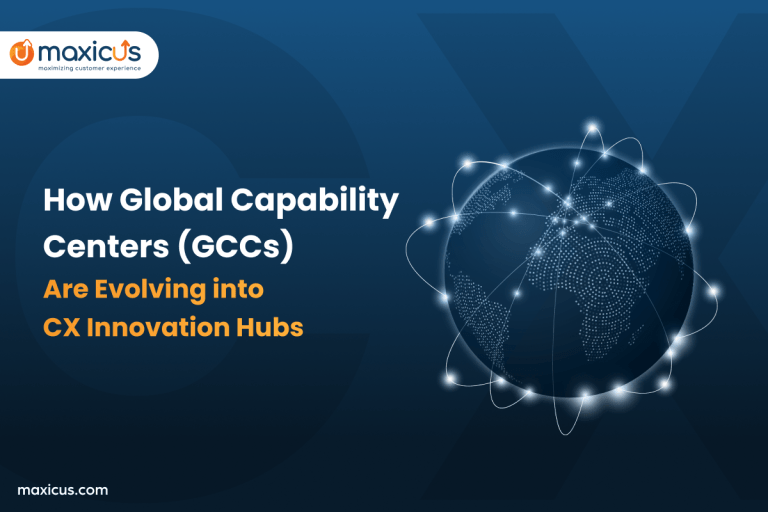Reinventing Contact Centers: How a pandemic changed the way BPOs have worked
The impact of COVID-19 on contact centers
Contact center representatives are responsible for responding to inquiries of customers, and companies are facing a different set of challenges. In times of a crisis, it’s typical for customers to reach out more often to the companies with whom they conduct business- particularly healthcare organizations, insurance companies, and financial services organizations.
Returning agents may require reassurance and demonstration that measures recommended in workplace risk assessments have been implemented to ensure their safety, as they may have some level of anxiety about their safety.
Businesses should recognize the need to have transparent and regular communications with agents, using various channels to bolster key messages.
Companies must make sure that the measures put in place to maintain distancing, and improve hygiene do not hurt the ability of staff to take regular breaks away from their desks.
Let us handle your customer support while you focus on growing your business.
COVID-19 is making clear to companies throughout the world the importance of having a business continuity plan that allows their agents to work from home. Work From Home has been a topic considered by the contact center world for past years. While some companies use WFH contact center employees, few organizations have more than a couple of agents, and next to no supervisory or management resources, who work from their home offices. Using WFH agents would be the safest way to staff contact centers during this pandemic. Starting a WFH program will be tough but not impossible to accomplish.
If contact center agents were working at all, they were mostly doing so from home. Companies that had agents working on remote contact center solutions before the crisis hit were able to ensure business continuity by equipping agents to work from home. Some companies may have had to struggle to get laptops and headsets to their newly WFH staff, but the agents were able to use the same familiar interface they were already using in the office, minimizing service disturbance.
Businesses around the world are switching to remote work mode for an uncertain period. Nobody knows how long this situation will last. Given such conditions, every business has to adapt to the new realities and prepare their contact centers for new conditions.
Reinventing The Contact Center: How Maxicus kept up
Throughout the crisis, we have worked with businesses providing contact center support to help them meet the challenges of these unprecedented times. We’ve seen that the companies that are not only surviving but beginning to gain the momentum necessary to thrive long-term. We have consistently prioritized contact center best practices that endure the test of time and a global pandemic.
Uncompromising Focus on Customer Experience
A strong focus on customer experience is the most critical best practice for any successful contact center. Brands that set themselves apart by creating exceptional customer experiences rise above the competition. Every time.
That includes a global pandemic. Customer experience has never been more important. Crisis offers the uncommon opportunity to deliver customer interactions that build unshakable loyalty. Now is the time to get the most out of every customer interaction and deliver loyalty-building customer experiences.
Leveraging technology
In effect to improve the customer experience, map the current flow, and look for ways to improve. Leverage solutions to easily map and modify new flows as needed.
The monitor agent calls for coaching opportunities. Monitor interactions to identify exactly where experienced agents are delivering great service while uncovering opportunities for call center training and coaching. You’ll improve customer experience metrics like average handle time and first call resolution.
Taking the ‘Leap’
Leap is a virtual contact center solution, is the default choice for contact centers focused on improving customer experience, and its benefits have never been clearer than now. In these uncertain times, Leap has proven to be a critical and direct way to future-proof your contact center and elevate customer experience under any condition.
61% say that they’re planning on moving their contact center to the cloud. This number is likely to increase as businesses search for business continuity options after COVID.
But the effects of this pandemic have shown it takes a cloud solution to adapt in a constantly changing world. With the cloud, contact centers can burst to scale and maintain business continuity in crisis regardless of where agents work. And that’s good news for customer experience, agent productivity, and the long-term survival of your organization.
Workforce Management
Workforce management is becoming a contact center requirement for optimal customer experience.
Fully integrated WFM is the most effective way to ensure workforce satisfaction, stability, and productivity when stress is high and change is certain.
Workforce Management (WFM) for intelligent staffing and scheduling based on real-time forecasts and historical data. Performance Management for setting personal targets, benchmarks, and achievements for each agent to deliver positive customer interactions. WFM makes it easier for agents and supervisors to learn and quickly gain efficiency.
Smart Quality Management
Quality management (QM) is a key contributor to improving the customer experience because it pinpoints where your team is doing well, as well as areas for improvement. Comprehensive contact center quality management solutions that record agent calls, capture desktop screens, evaluate customer interactions, and identify coaching and training opportunities to improve customer satisfaction.
Establishing a framework for success. Before recording and analyzing calls, document the goals of the quality management program. Communicating the benefit to agents. Knowing they’re monitored can cause stress for agents already working under extreme conditions. Assure them that coaching and training will improve customer interactions and make them more.
The difference between call center and contact center services & their role in customer engagement
Supporting and Motivating Agents
Businesses worldwide have been laser-focused on supporting and keeping customers during the pandemic. But flexible brands know that beyond customer satisfaction, supporting their agents through the stress and uncertainty is equally critical for business continuity and long-term survival.
When agents feel supported, they perform better, making it easier to maintain business continuity in crisis.
Integrated Omni Channel Service
Microsoft found that 66% of customers use an average of 3 communication channels to connect with customer service.
In an always-on, mobile-first world, omnichannel customer support should sound like an obvious contact center best practice. The rise of social media, constantly-in-hand mobile devices and a thirst for choice means customer experiences that win loyalty are ones that meet customers where they are.
With every service channel you open, you’re offering more comfort. But people expect all channels to reflect your best service levels and efficiency.
Siloed data sources and unintegrated applications in systems create vastly different experiences for customers by channel. That inconsistency leads to an overall negative customer experience.
Ensure your mobile apps, websites, text, chat, email, and agent desktops operate as one coordinated system within an omnichannel contact center.
Meet Customer Experience KPIs
Historically, the focus for contact center metrics has been on improving agent behavior to positively influence customer service outcomes. However, it’s possible to achieve high-quality performance scores while still delivering negative customer experiences.
Incentivizing agents to achieve contact center KPIs like low average handle time, for instance, is widely used. But it can have unintended consequences, such as driving agents to quickly end interactions before customers’ issues are resolved to their satisfaction. A high average handle time can also mean agents are struggling to access the right information.
Contact centers that adopt customer experience metrics that drive loyalty and service win. Before, after, and during a crisis.
Use smart and efficient Self-Service; Don’t replace agents
Self-service across channels makes good commercial sense and is often preferred by customers for routine, uncomplicated issues. But not all issues can be resolved through self-service. Simply embracing self-service for the contact center’s financial benefit to deflect phone calls, can backfire.
For customers, it’s torture when they are stuck in an IVR system and struggle to get to call center agents when needed.
With the right technology, it’s possible to pivot to a live agent who is conscious of the customer’s historical service journey across channels. This empowers agents to quickly soothe frustration and deliver customer loyalty-building interactions that surprise and delight.
Stay Open to Change
In a world that’s rapidly evolving in unprecedented ways, don’t lose focus of time-tested contact center best practices amid the confusion. At the same time, stay open to new approaches and emerging technology.
For instance, chatbots powered by artificial intelligence can be measurably helpful in handling surges in contact volumes. And the move to omnichannel cloud contact center solutions has accelerated for good reason.
The future of contact centers
Going forward, companies and customers alike will be putting more and more emphasis on customer care as a brand differentiator rather than as a support function. Although recruiting and training agents is a vital part of call center operations to stand out, companies are exploring technology integrations to make their operations more efficient.
Sophisticated cloud-based offerings such as CCaaS (Contact Center as a Service) are proven models that bring an added level of productivity with large cost benefits to traditional Contact Centers, while technologies like AI are still being developed and implemented.
Contact center business will be exploiting the benefits of an application ecosystem and tools to better equip staff to work in teams. Application leaders for customer service must assess the technology and changes for the future of work to provide cutting-edge customer experiences.
Save time and money with our outsourced contact center services
Microsoft found that, on a global basis, customers now have higher expectations of Contact Centres, than they used to. As new tech evolves, your customers expect you to evolve with it.
Contact center automation is accelerating, so companies need to implement best practices or risk falling behind the competition. Technological advances in robotic process automation, artificial intelligence, and machine learning are changing the face of customer care. However, just because you can automate something in the contact center doesn’t mean you should.










